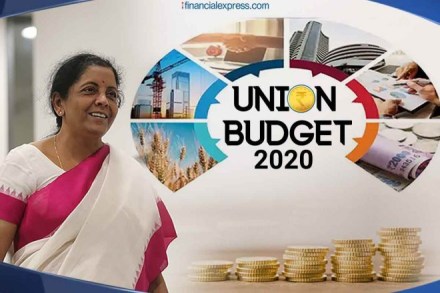Budget 2020-21: With the Union Budget 2020 all set to be unveiled later today, the share market is keeping a keen watch on what Finance Minister Nirmala Sitharaman pulls out of her bag to revive a sagging economy. Share markets have in the last one year have outperformed Indian economy’s performance, which some experts say is due to pricing in an evident economic recovery. In the last six years, since the Narendra Modi-led government came to power, share market performance as measured by benchmark BSE Sensex has been mixed every year from one Budget to the next. Then Finance Minister Arun Jaitley presented Narendra Modi-government’s first Union Budget 2014 on July 10, 2014. Since then, the Budget year 2015-16 was the only year when Sensex gave a negative return, with a fall of 21%.
2014-15: Narendra Modi takes the throne
In the year 2014, the Narendra Modi-led National Democratic Alliance (NDA) came to power with a whopping majority, defeating the Congress-led United Progressive Alliance (UPA) in the Lok Sabha election. The year witnessed many events such as changes to the labour laws, foreign investment in infrastructure and real estate sectors, the Reserve Bank of India’s (RBI) fight against inflation, ‘Make in India’ initiative, etc. During this year from July 10, 2014 to February 27 2015, S&P BSE Sensex gained 14.529 per cent.
Watch Video: What is Union Budget of India?
2015-16: Complicated affair
Starting from the budget year 2015, it was a complicated year for the Indian stock markets as the events such as tepid corporate earnings, subnormal monsoons, fall in commodity and oil prices along with interest rate cuts, dented the investor sentiment. The S&P BSE Sensex fell 21.27 per cent during February 28, 2015 to February 26, 2016.
ALSO READ | Budget 2020: Govt must offer T20 pace of tax reforms for SMEs to chase $5-trillion target in time
2016-17: Demonetisation
However, the Budget year 2016-17 was the year of many surprises. Back home, Prime Minister Narendra Modi announced to withdraw the legal tender status of the Rs 500 and Rs 1,000 currency notes in order to curb black money issues. In September, Indian army attacked some terrorist camps on the other side of the border with Pakistan. This made investors cautious over the rising geopolitical tensions between both countries. While, the market reaction to Donald Trump’s victory in the US Presidential election was positive. During this year from February 29, 2016 to January 31, 2017, S&P BSE Sensex gained 19 per cent.
2017-18: GST
The Budget year 2017-18 was an impressive year for the Indian stock markets. The S&P BSE Sensex gained 30 per cent in the period from February 1, 2017 to January 31, 2018. The year saw implementation of Goods and Services tax (GST) and victory of Bhartiya Janta Party (BJP) in assembly elections in states such as Uttar Pradesh, Gujarat and Himachal Pradesh.
ALSO READ | Budget 2020: Investors seek taxation, investment reforms to increase domestic share of startup funding
2018-19: LTCG makes a comeback
Indian stock markets witnessed a diverse magnitude of volatility during the period from February 2, 2018 to January 31, 2019. This year, the imposition of capital gains tax on the investments, resignation of RBI governor Urjit Patel, US-China trade deal, kept the investors on tenterhooks. S&P BSE Sensex gained just 0.57 per cent during this period.
2019-20: Modi’s re-election
Sensex’s year-to-date (YTD) returns from February 1, 2019 to January 31, 2020 is 11.66 per cent. This year, Indian stock markets witnessed general elections, slowing economic growth, massive corporate tax rate cuts, tussle between the RBI and the government, resignation of the RBI governor, full Union Budget, a total of 135 bps repo rate cut, Ayodhya verdict, abrogation of Article 370, US-China trade deal were among the major triggers.
